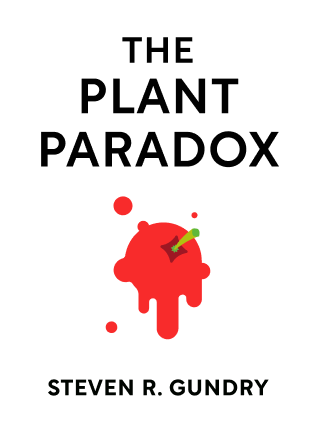

This article is an excerpt from the Shortform summary of "The Plant Paradox" by Steven R. Gundry. Shortform has the world's best summaries of books you should be reading.
Like this article? Sign up for a free trial here .
What are hormone disruptors? How do the Seven Deadly Disruptors affect the body?
If you want to know what are hormone disruptors, keep reading.
What Are Hormone Disruptors?
There are Seven Deadly Disruptors that disrupt your body’s ability to heal itself and maintain its natural equilibrium; disruptors alter your holobiome, throw off your body’s internal clock, and make you more susceptible to lectins and LPSs.
What are hormone disruptors’ effects on the immune system? In response, your immune system attacks the lectins and LPSs that have broken through your intestinal wall and goes into heavy fat-storing mode to hold onto as many calories as it can to fuel the fight. You may not know the war that’s being waged inside your body—all you know is the numbers on the scale are rising, or you’re not at 100 percent health.
As we’ll see, these disruptors are all around us, but if you know what they are and what they do, there are ways to avoid them.
We’ve talked about two disruptors already—whole germ agglutinin (WGA) and transglutaminase—which both contribute to LPSs breaching your intestinal wall. Here are seven more common disruptors to avoid.
Disruptor 1: Endocrine Disruptors
What are hormone disruptors otherwise known as? Endocrine disruptors mimic hormones (mostly estrogen), causing weight gain, early puberty, and a host of other health issues. Endocrine disruptors include:
- Butyl hydroxytoluene (BHT) is a preservative used in processed foods (anything with a shelf life that’s whole grain).
- tert-Butylhydroquinone (tBHQ) is used in processed foods. tBHQ can actually prompt an allergic response to wheat, milk, eggs, nuts, shellfish, and other foods; the additive may be partly to blame for the rise in food allergies.
- Bisphenol A (BPA) is used in plaster water bottles, plastic lining in canned goods, and even baby teething rings.
- Methylparaben is used in multi-use drug containers (e.g. a bottle of novocaine). Methylparaben can cause an allergic reaction that is often mistaken for an allergy to the drug.
- Parabens are used in sunscreen and cosmetics.
- Triclosan is used in hand sanitizers, soaps, deodorants, toothpaste, and other personal care products. Triclosan alters your holobiome, killing off many important microbes, promoting obesity, and even stimulating the growth of precancerous cells.
Disruptor 2: Broad-Spectrum Antibiotics
Broad-spectrum antibiotics kill your microbiome along with the illness-causing bacteria. Your microbiome is a complex ecosystem, and when it gets altered or destroyed it affects how everything functions; it can take up to two years for your microbes to grow back, and some may never return.
Disruptor 3: Nonsteroidal Anti-Inflammatory Drugs (NSAIDs)
NSAIDs—including Advil, Motrin, ibuprofen, Aleve, Naprosyn, Mobic, Celebrex, and aspirin—damage the protective barrier along your intestinal walls, allowing lectins, LPSs, and other objects to pass through to your body.
Disruptor 4: Stomach-Acid Blockers
Stomach-acid blockers prevent your stomach acid from performing several critical functions. In addition to altering your stomach acid, most acid-blocking drugs are proton pump inhibitors (PPIs), which inhibit your cells from producing the energy they need to function. Studies have shown that this can increase your risk of dementia and chronic kidney disease.
Instead of acid reducers, try Rolaids (a calcium-based antacid) and DGL wafers (chewable wafers made from licorice root, which promotes mucus production in the stomach and esophagus to protect against excess acid).
Disruptor 5: Artificial Sweeteners
Although you may reach for a diet soda to avoid weight gain, the artificial sweeteners it contains actually cause you to gain weight. Sweeteners also kill some of the good bacteria in your holobiome, which allows for bad bacteria to run rampant. In fact, a study showed that one Splenda packet destroys half of your natural gut microbes. (Shortform note: The study gave rats high doses of Splenda. In order to have substantial negative effects on a human’s microbiome, she would have to consume hundreds of Splenda packets or over 100 cans of diet soda per day.)
Disruptor 6: Roundup Weed Killer
The common weed killer Roundup is widely used on crops that we eat and that become animal feed, so we’re constantly exposed to its chemicals and their harmful health effects.
Normally, your gut bacteria produce three important amino acids: tryptophan, tyrosine, and phenylalanine. What are hormone disruptors in Roundup doing? However, chemicals in Roundup prevent your gut bacteria from being able to make those essential amino acids, which help make serotonin (the “feel good” hormone) and contribute to thyroid hormone production.
Disruptor 7: Blue Light
Biology programmed humans’ hunger cues to respond to daylight—specifically, the blue wavelength spectrum of daylight. Not only are you wired to find and eat food during the day, but longer days also tell your body that it’s summer, which is time to eat as much as possible and store the fat for winter.
Electronics including TVs, cell phones, computers, and tablets emit this blue light, making your body think that it’s constantly summer, putting it in perpetual fat-storing mode.
What are hormone disruptors in blue light doing to you? Furthermore, blue light stimulates the hunger hormone ghrelin and the awake hormone cortisol, while suppressing the sleep-inducing hormone melatonin; sleep deprivation is associated with obesity.
Exercise: Get Disruptors Out of Your Life
It may seem like disruptors are everywhere, but with a few tweaks of your lifestyle and changes to your habits, you can eliminate or drastically reduce these health harms.
- Think of the last time you took some form of medical disruptor, such as antibiotics, NSAIDs, or acid reducers. What could you have done to avoid it, either by prevention (not eating food that causes heartburn) or an alternative form of treatment?
- What are hormone disruptors you have in your life? What are two or three simple changes you can make to reduce your exposure to endocrine disruptors (e.g. packing your lunch in a glass container or buying a different brand of toothpaste)?
- What is one way you can commit to reducing your blue light exposure?

———End of Preview———
Like what you just read? Read the rest of the world's best summary of Steven R. Gundry's "The Plant Paradox" at Shortform .
Here's what you'll find in our full The Plant Paradox summary :
- Why eating more vegetables isn't enough, and why some vegetables are toxic to your body
- The science behind lectins and how they tear apart your body, making you fat and sick
- The 6-week program to get your body back on healthy grack






